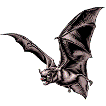Museum, University of Nebraska State

University of Nebraska State Museum: Mammalogy Papers
Document Type
Article
Date of this Version
June 1994
Abstract
We are interested in the tooth-food interface and the functioning of teeth. The cross-sectional shapes of canine teeth of bats can be triangular or polygonal. The vertices of the triangle or polygon represent edges that extend longitudinally from tip to cingulum. One of us proposed there should be differences in how cracks are propagated in the substance being penetrated based on the shape of the tooth. To test this idea we have used finite-element analysis to simulate the effect of an edged tooth versus a non-edged or circular tooth as it penetrated a substance. To see what actually happens we have used oversized metal models of edged and non-edged teeth and the materials science technique of photoelasticity. A unique aspect of our approach is to use photoelastic plastic, to test the stress in a photoelastic “food.” Here we stress-freeze the oversized model in the plastic and document the patterns of stress with a polariscope. From our preliminary results we can now verify experimentally what was simulated with finite-element analysis. It is not surprising that there is an increase of surface energy at the edge of an edged tooth and no such build-up with a circular or non-edged tooth. We have now established a protocol to examine more subtle shapes of teeth and can analyze the tooth marks in three dimensions.


Comments
Published in Journal of Morphology, 220 (1994): p. 345. Copyright © 1994 John Wiley & Sons. Used by permission.